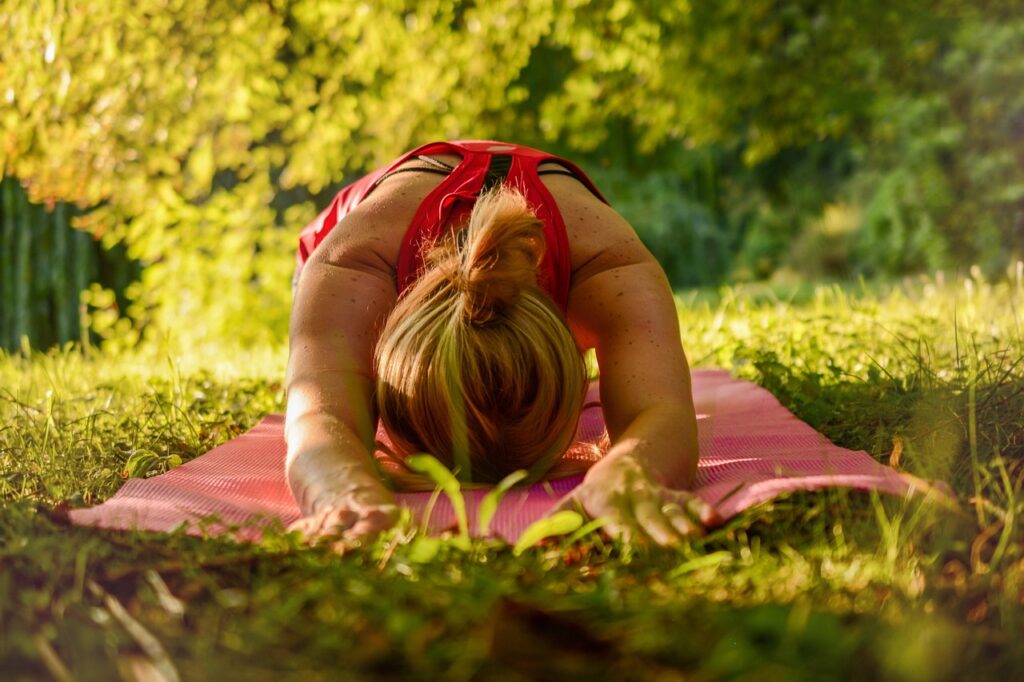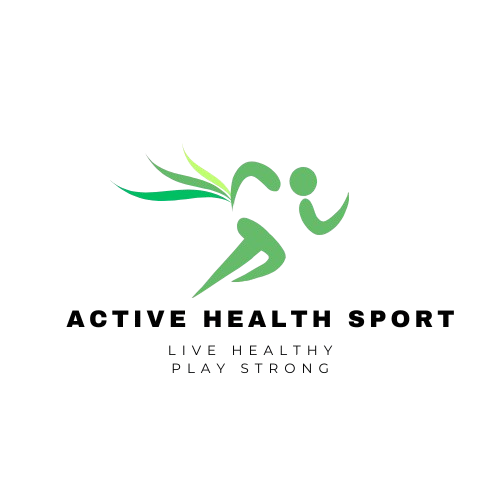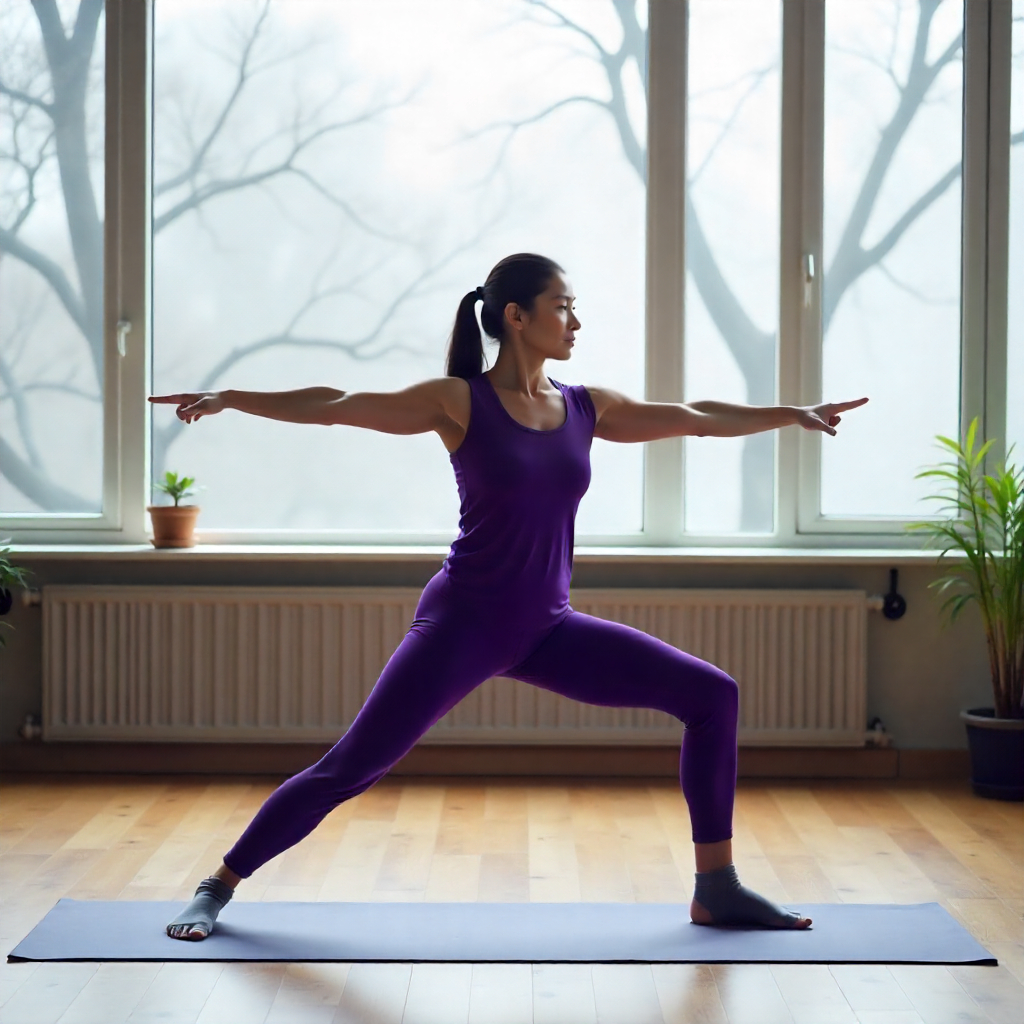Stretching is often thought of as a way to improve flexibility or prepare the body for exercise, but science now shows it does much more.
The techniques we apply, whether through active or static stretching, can influence not only our muscles but also our nervous system, emotional health, and overall mood. With modern research highlighting the link between movement, stress reduction, and mental clarity, stretching deserves recognition as a comprehensive practice that supports both body and mind.
What is Active Stretching
Active stretching involves moving muscles and joints through their full range of motion without external assistance. The stretch is created by engaging the opposing muscle group to lengthen the target muscle.
For example, lifting your leg straight up and holding it in place using only your muscles is an active stretch. Because it requires continuous muscle activation, active stretching often feels dynamic and energizing.
This form of stretching increases blood circulation, primes the body for movement, and stimulates the nervous system. It is commonly used before workouts because it prepares muscles for performance and lowers the risk of injury. But the benefits are not limited to physical readiness; recent studies suggest active stretching also boosts mental alertness by increasing oxygen flow to the brain.
What is Static Stretching
Static stretching, on the other hand, involves holding a position for an extended period, usually between 20 to 60 seconds. The goal is to gently lengthen muscles and fascia while allowing the body to relax into the stretch. Think of touching your toes and holding the position without bouncing, that is static stretching.
Unlike active stretching, static stretches are usually performed after exercise or during relaxation practices like yoga. They help reduce muscle tension, enhance flexibility, and activate the parasympathetic nervous system, which is responsible for the body’s rest-and-digest response. This makes static stretching particularly effective for calming the mind and lowering stress hormones such as cortisol.
The Nervous System Connection
To understand how stretching affects stress and mood, it helps to look at the nervous system. Our bodies are governed by two primary systems: the sympathetic nervous system, which prepares us for action, and the parasympathetic nervous system, which brings us back to balance and calm.
Active stretching stimulates the sympathetic system to a mild degree, keeping us alert, awake, and focused.
This controlled activation helps release tension without overwhelming the body. Static stretching, by contrast, shifts dominance toward the parasympathetic system, slowing heart rate, encouraging deeper breathing, and promoting relaxation.
Stress and Hormonal Balance
When stress builds up, cortisol levels rise and can leave us feeling anxious, fatigued, or mentally clouded. Research indicates that stretching helps regulate these stress hormones.
Active stretching provides a healthy outlet for excess energy and helps the body metabolize stress hormones more effectively. Static stretching, by encouraging stillness, lowers cortisol production and releases endorphins, the body’s natural mood enhancers.
This dual role makes stretching a unique tool in stress management. Instead of only calming or only stimulating, it can be adapted to meet your current needs. If you feel sluggish and foggy, active stretching can wake you up. If you feel anxious or restless, static stretching can bring you down to a calmer state.
Impact on Mood and Mental Health
Mood is influenced by neurotransmitters, blood flow, and the body’s perception of safety and relaxation. Active stretching enhances blood circulation to the brain, which may improve concentration, reduce mental fatigue, and increase overall alertness. Static stretching, on the other hand, has been linked to reduced symptoms of anxiety and depression because of its calming effect on the nervous system.
Several clinical trials have demonstrated that participants who engaged in regular stretching routines reported better sleep, improved self-esteem, and greater emotional resilience. By incorporating both active and static stretches into a weekly routine, individuals can harness a powerful natural method to stabilize emotions and improve mental health outcomes.
Stretching as Mind-Body Therapy
Many people turn to meditation or breathing practices to manage stress. Stretching complements these methods because it combines physical release with mindful awareness. Active stretching can be practiced with controlled breathing to synchronize body and mind, while static stretching encourages stillness and inward focus similar to meditation. The act of slowing down, tuning into the body, and acknowledging sensations enhances self-awareness and builds a healthier relationship with stress.
Practical Applications: When to Use Each Type
- Before exercise or work: Active stretching is most effective for waking up the muscles and improving focus
- After workouts or in the evening: Static stretching is ideal for cooling down and preparing the body for rest
- During stressful workdays: A short series of static stretches can be used as a reset to calm nerves
- When feeling low energy: Active stretching during breaks can refresh the body and clear mental fog
Stretching and Workplace Stress
Modern work environments often involve long hours of sitting, leading to stiffness and stress. Micro-breaks with active stretching, such as shoulder rolls or standing leg lifts, counteract the effects of prolonged sitting and re-energize the mind.
Static stretches like seated forward folds or gentle neck stretches during breaks encourage relaxation and reduce accumulated tension. Employers are increasingly recognizing these benefits and integrating stretch breaks into wellness programs.
Also Read the Latest: 12 Must-Try Poses Yoga for Desk Workers to Counteract Sitting
Stretching and Sleep Quality
Poor sleep is often tied to stress and restless energy in the body. Static stretching before bedtime helps signal to the nervous system that it is time to rest. Research shows that a brief stretching routine performed in the evening reduces the time it takes to fall asleep and improves sleep quality.
Combining gentle static stretches with mindful breathing creates an environment of calm that supports healthy sleep cycles.
Scientific Evidence Supporting the Benefits
Recent peer-reviewed studies have highlighted stretching’s effect on both the musculoskeletal system and psychological health. A 2023 study published in the Journal of Behavioral Medicine found that participants who engaged in regular static stretching reported a 19% decrease in perceived stress levels over eight weeks.
Another study in Frontiers in Psychology noted that active stretching improved working memory and task performance in adults by boosting cerebral blood flow. These findings underline that stretching is not simply a physical practice but a holistic wellness strategy.
Creating a Balanced Routine
The best results come from blending both active and static stretching throughout the week. For instance, starting the morning with five minutes of active stretching prepares you for productivity, while ending the evening with ten minutes of static stretches supports relaxation. This combination ensures you address both sides of the stress and mood spectrum, activation and restoration.
A sample daily flow could include:
- Morning: Active shoulder circles, dynamic lunges, and arm swings
- Afternoon: Static seated hamstring stretch and chest opener
- Evening: Static child’s pose and reclining twist before bed

Frequently Asked Questions
Which is better for stress relief, active or static stretching?
Static stretching is generally considered more effective for immediate stress relief because it engages the parasympathetic nervous system, which helps lower heart rate, relax muscles, and calm the mind. For example, holding a forward fold or child’s pose for 30 to 60 seconds encourages the body to release tension that has built up from daily stressors. However, active stretching also has important benefits.
Can stretching replace meditation for stress management?
Stretching should not be viewed as a complete replacement for meditation, but it can serve as an excellent complement. Meditation focuses on training the mind, while stretching connects both body and mind through physical release. For instance, static stretching performed with slow, steady breathing mimics meditation because it brings attention inward and quiets racing thoughts. Active stretching, when done mindfully, can function like moving meditation, keeping your awareness on each controlled movement.
How long should I hold a static stretch for mood benefits?
Holding a static stretch for 20 to 60 seconds is generally recommended for both physical and emotional benefits. Shorter holds of around 20 seconds are useful when you are short on time and want to quickly reduce tension in areas like the shoulders, hips, or back. For deeper mood benefits such as lowering anxiety or preparing for sleep, longer holds of 45 to 60 seconds, or even up to two minutes in restorative yoga, are more effective.
Does active stretching increase anxiety since it activates the body?
Active stretching does not increase anxiety when done correctly. In fact, it often helps reduce stress by improving focus and releasing physical tension. Because it involves controlled movements, active stretching encourages the brain to stay present, which limits anxious or repetitive thoughts. It also promotes circulation, bringing more oxygen to the brain and helping restore mental clarity.
For example, doing a set of dynamic leg swings or torso rotations during a mid-afternoon slump can energize you without overstimulating your nervous system.
Can stretching before bed really help with sleep?
Yes, stretching before bed can significantly improve sleep quality, especially when stress is a factor in insomnia. Static stretches such as gentle seated forward bends, reclining twists, or a supported butterfly pose prepare the body to transition into a restful state. These poses lower heart rate, calm the nervous system, and help release tightness in the hips and spine that may make it uncomfortable to lie still in bed.
Should I avoid static stretching before exercise?
It is generally better to avoid long static stretches before exercise because holding muscles in a lengthened position can temporarily reduce strength and power. For example, if you are preparing to run or lift weights, static stretching may slightly decrease your muscle responsiveness. Instead, active or dynamic stretching, such as walking lunges, arm circles, or hip swings, warms up the muscles and prepares them for performance.
How often should I stretch for stress management?
Stretching daily, even for just 5 to 10 minutes, can have powerful effects on stress management and mood. For people with high-stress jobs or long hours of sitting, short active stretching breaks throughout the day, such as rolling the shoulders, standing side bends, or gentle torso twists, are especially beneficial for resetting the mind and body. Static stretches in the evening can be done longer, turning into a calming routine before bedtime.
You might also like the following…
- Why a Digital Detox Before Bed Can Fix Your Sleep FasterThe Modern Sleep Thief Hiding in Your Hand In a world where we check our phones hundreds of times a day, it’s no surprise our sleep has taken a hit.Most people scroll through… Read more: Why a Digital Detox Before Bed Can Fix Your Sleep Faster
- How to Align Your Circadian Rhythm for All-Day Energy GainsWhy You Feel Tired Even After Sleeping Enough Have you ever slept for eight hours and still felt groggy the next morning?The issue might not be how long you sleep, but when you… Read more: How to Align Your Circadian Rhythm for All-Day Energy Gains
- Electrolytes vs. Water: What Active Adults Must KnowBeyond Water, The Hidden Key to True Hydration Most adults know the rule, “Drink more water.”But few realize that hydration isn’t just about fluid intake. It’s about electrolyte balance, the invisible electrical system… Read more: Electrolytes vs. Water: What Active Adults Must Know

Kait Amazra is the founder and lead writer of Active Health Sport. With over 25 years of experience in health, fitness, and wellness education, Kait combines professional expertise with a passion for helping people live stronger, healthier, and more balanced lives.
As a licensed health and fitness professional, Kait has worked alongside industry experts to deliver evidence-based insights on physical activity, nutrition, recovery, and holistic well-being. Through Active Health Sport, Kait’s mission is to make trusted, practical, and science-backed health information accessible to everyone, from beginners building new habits to athletes seeking peak performance.

